Four Reasons We No Longer Buy or Use Lonely Planet Guide Books
I still remember the first thing Alissa and I did after we purchased our plane tickets for our first big international trip to the Philippines in 2008. We went to the local bookstore and bought the Lonely Planet guide to the Philippines. We traveled for two weeks there using the book each and every step of the way. We still have the book too, now more as a souvenir, as it looks cool because of how beat up it is. As I look back onto our first time in the Philippines, I do have good memories, but there is one thing I wish I could change. I wish I could go back and do the trip again, but this time without the book. After that trip, Alissa and I decided never to travel with another Lonely Planet book (language guides excluded). We did buy the most-recent Myanmar updated Lonely Planet e-book to give them one more shot, and we will sometimes browse one in a hotel lobby here and there, but our opinion hasn’t changed.
Here are the reasons we no longer use Lonely Planet, or any other printed/ebook guides any more:
1. Lonely Planet is ONE person’s opinion
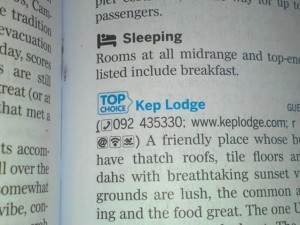 Yes, I know the books have multiple authors and editors, but when it comes down to Lonely Planet’s top choices in each destination, it is the most recent traveler to that city who picks their favorite restaurants, hotels, etc. One of the best things about the internet is crowd-sourcing, and the travel industry is seeing websites like TripAdvisor, Yelp, and WikiTravel revolutionizing how travelers do their homework. In 1995, I could see the need for Lonely Planet’s hotel and restaurant information, but in today’s world I can look at what hundreds of people think of an establishment instead of what just one person thinks. TripAdvisor is doing an amazing job creating profiles for reviewers so that we can now even check the credibility of each person’s review, making sure they really know their stuff.
Yes, I know the books have multiple authors and editors, but when it comes down to Lonely Planet’s top choices in each destination, it is the most recent traveler to that city who picks their favorite restaurants, hotels, etc. One of the best things about the internet is crowd-sourcing, and the travel industry is seeing websites like TripAdvisor, Yelp, and WikiTravel revolutionizing how travelers do their homework. In 1995, I could see the need for Lonely Planet’s hotel and restaurant information, but in today’s world I can look at what hundreds of people think of an establishment instead of what just one person thinks. TripAdvisor is doing an amazing job creating profiles for reviewers so that we can now even check the credibility of each person’s review, making sure they really know their stuff.
When we are heading to a new city, we can now get more of a consortium of opinions from travelers who are just like us. Lonely Planet has always been focused on the young, backpacker crowd, meaning their top choices and reviews are always keeping just that audience in mind. Lonely Planet can’t compete in other demographics because their books and their authors don’t always appeal to travelers in other demographics. Take my friend Tom from TravelPast50.com for example. For the 40+ traveler demographic, Tom’s website guides and recommendations are so much more useful than Lonely Planet’s, and his content is free! (you’ll also notice Tom doesn’t list Lonely Planet as one of his travel resources)
2. Once it’s printed, it’s out of date
One of my favorite moments in television history is when Jason Jones of the Daily Show asks the editor of the New York Times to show him one thing in that day’s paper that HAPPENED TODAY. His point, although a little bit of a stretch, was that everything in the New York Times printed edition is yesterday’s news. The segment was satire, and of course the New York Times still has relevant and necessary information each edition, but the point he was making was about digital’s number one advantage over print: It’s easy and cheap to update.
Lonely Planet has simply not adapted and evolved into the digital age. They had such potential to make LonelyPlanet.com a leading travel website, but failed to do anything innovative with the site. Maybe things would have been different if Maureen and Tony Wheeler hadn’t sold Lonely Planet in 2007, but what’s done is done. LonelyPlanet.com reads more like one giant advertisement to buy their books or something from one of their partners like HostelWorld or WorldNomads. The content within the site is out-dated, brief, hard to navigate, and generally not useful. The forums can be OK, but even my experiences in the forums have left me without the information I was seeking. In my opinion, WikiTravel.org beats Lonely Planet in every category when it comes to travel guides:
Just pick any city, then look at the differences in both content quantity and content quality between LonelyPlanet.com’s guide to the city vs. Wikitravel.org’s guide to that same city. We were just in Hoi An, Vietnam, so I’ll use that as the example:
LonelyPlanet.com’s guide to Hoi An VS Wikitravel.org’s guide to Hoi An
3. Traveling is about discovery – both good and bad
In Myanmar, we would walk into a “Lonely Planet Top Choice” hotel and see four or five other travelers and couples, all with their own Lonely Planet guide, waiting in line to check in. If we wanted to do the exact same tour as the Lonely Planet author, then the book would be perfect for us. But seeing all these people go directly to the Lonely Planet hotel, most without doing any research of their own, was kind of sad. That was the last time we went to the Lonely Planet Top Choice hotel in any city.
Traveling is about discovering things on your own and forming your own opinions from experiences you create. Picking a hotel on your own, one that you may know little to nothing about is exciting. Will it be awesome? Will it have cockroaches? Will the staff be helpful? There’s only one way to find out! Sure, every time we stay at a Lonely Planet Top Choice, our experience has been fine. They have been bustling with tourists, generally clean, the staff good, and of course the signs about what Lonely Planet thinks about them are everywhere. However, our BEST hotel and guest house experiences have come at places that we’ve found on our own. Whether through online research, randomly walking into a hotel, or referrals from other travelers. Not one of our favorite hotels has ever been a Lonely Planet Top Choice, and many are not even listed in their books as an option.
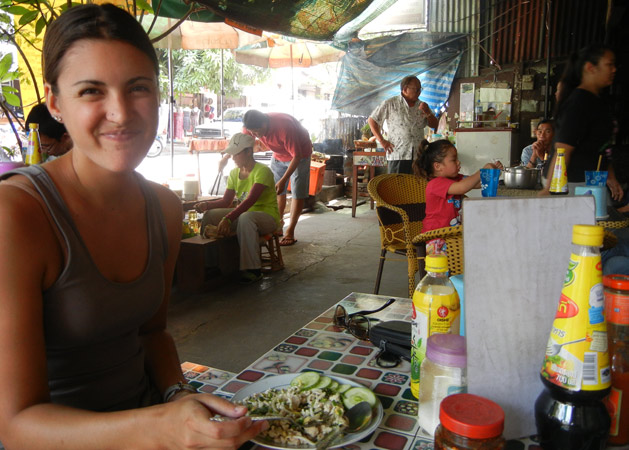
Eating at a family-owned restaurant in Laos. Not found in any travel guide.
This same principle applies for restaurants and bars. Many times we’ve seen two restaurants, nearly identical in price, quality, and location, but one with a Lonely Planet recommendation and one didn’t. The Lonely Planet restaurant is packed nearly every night, while the other restaurant always has room. Fair or not, the amount of money Lonely Planet can throw towards a business based on one person’s experience is pretty crazy. We prefer crowd-sourced restaurant/bar reviews from sites like TripAdvisor, or better yet, we just look for a place where locals are eating and walk in. Will it have cockroaches? Again, this is why we travel, to find out for ourselves!
4. We don’t like Lonely Planet Zombies
They’re everywhere. They walk around the touristy streets of destinations everywhere, nearly running people over as they refuse to look up from their Lonely Planet book. These are the disciples of Lonely Planet. The travelers so dedicated and obsessed with LP that they refuse to sleep or eat anywhere that isn’t mentioned in the book. By not going to the places LP recommends, we have been able to avoid these types of travelers more than before. However, they still lurk everywhere. Here are just a few of the things we’ve seen from this race of brainless backpackers:
- A backpacker screaming at a laundry lady in Hoi An, Vietnam while pointing inside his Lonely Planet book: “The price should be $1 per kilogram!” She was calmly trying to tell him her price has been $1.50 for over a year now, but he was so upset that he wouldn’t listen. Note: He also had a plastic cover for his book.
- A young women nearly run over by a bus in Bangkok’s Chinatown because she was reading her LP while crossing the street instead of looking both ways. “This information on my walking tour is worth dying for!”
- While in Ubud, Bali, Alissa and I were sitting on a restaurant patio, enjoying one of the best dinners we’ve had on our trip. A young couple walks by, and the guy points to our restaurant and suggests they come in. She opens up her Lonely Planet Pocket Bali book and says “No way! It isn’t in Lonely Planet, I don’t want to get sick”.
Final thoughts
I think it’s important to state that I don’t HATE Lonely Planet. I just prefer to travel without one, and recommend other travelers do the same. We have traveled the Philippines, Myanmar, and Laos, all with extensively reading a companion Lonely Planet guide, and we’ve many more destinations all without every looking at a page. When I compare the experiences we’ve had, it is apparent that the level of excitement and fun is so much higher when we don’t cripple ourselves with a Lonely Planet.
I still enjoy many of Lonely Planet’s other products, like their pictorial travel book as well as their phrasebooks.
As much as I am against buying their travel guides, I am rooting for them as a company to make a comeback and alter their strategy to meet the digital demands of current travelers.


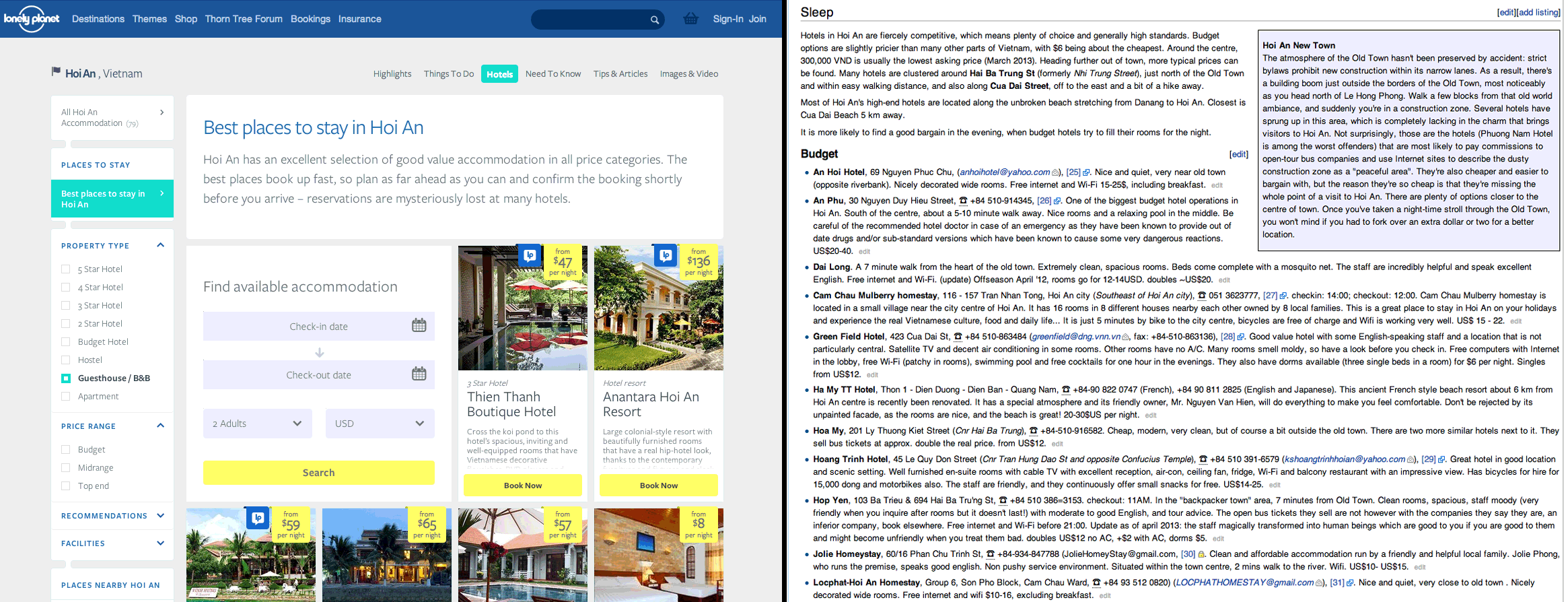
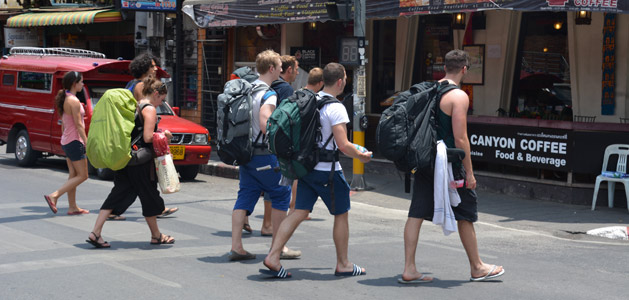
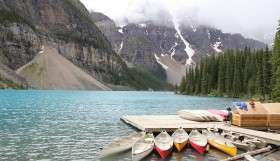

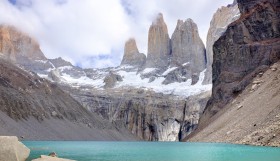
















29 Responses to Four Reasons We No Longer Buy or Use Lonely Planet Guide Books